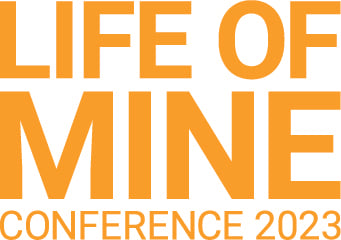Regenerative Approaches in Mining
Ahead of Rudolph Botha's highly anticipated keynote address at this year's Life of Mine Conference, we had the pleasure of chatting with him to discuss all things regeneration, including best practice for long-term strategic system planning and so much more.
Rudolph Botha
He leads the group-wide strategy for the delivery of integrated risk and opportunities-based post-mine design and land use planning, establishing safe, stable and sustainable landscapes for stakeholders and driving effective management of related risks...
What key message would you like to highlight to the delegates at the upcoming Life of Mine Conference?
Regeneration is the way forward, as it embraces full impact decision making and concepts such as circularity and nature based solutions, that will also unlock potential and add value to society. Having a “zero waste mindset", which focuses on the commodity being mined as well as other resources, is required. This mindset will unlock opportunities which allow us to reduce, re-use and repurpose mineral residue material.
This regenerative approach also takes into consideration the other less quantifiable values related to sustainable development and social transition. For example, opportunities to diversify and maximise the economic opportunity around our operations and communities. This can be achieved by cultivating relevant partnerships, co-funding, co-development and co-ownership, to maximise the available skills and funding
Can tell us about your role as Head of Regeneration at Anglo American, and how you and your team are evolving the industries thinking around mine closure?
In my role as Head of Regeneration in Anglo American, myself and the Regeneration team are looking to transition the mindset from that of “Mine Closure” to that of “Mine Regeneration”. This will include developing new measures of success, linked to a new value proposition. In short, we aim to create self-sustaining post-production ecosystems through embedding regenerative solutions into execution planning for operational and legacy assets. This is one of those areas where we as an industry can collectively embrace a more regenerative approach, changing the current view of mining in society, and also bringing long term value to society.
How has the mining industry changed in the last 25 years with their approach to ESG issues?
Historically (pre-2000), there was very little focus on ESG and the focus was mainly on legal compliance, as well as public reporting / disclosure as and when required. More recently the corporate governance component has fundamentally changed and improved significantly, with a much bigger requirement for public disclosure and reporting. The Environmental component is now under more scrutiny, with mining companies making public commitments in relation to No Net Loss to biodiversity, future carbon neutrality targets, freshwater used reduction target, just to name a few. The social component is probably the one that still needs the most attention and is by far the most challenging but intriguing aspect. That said, mining companies are also making public commitments around economic diversification, and the development of “non-mining dependent” employment opportunities. Where ESG was seen as a “nice to have” 25 years ago, it is now seen as a “must”, as it is a key component of a mining company’s license to operate.
What are some important lessons you have learned during your time with Anglo American and with closure execution projects?
There are lots of “lessons learned” in the mine closure space, and as an industry we have been working together to develop and share tools and guidance documents to try and address some of the challenges we have -, not just in planning for mine closure, but also in executing mine closure projects.
Early and ongoing engagement and collaboration with regulators as well as local communities and other relevant third parties are fundamental to identify “success criteria” aligned with an executable Post Mine Land Use plan and overarching closure vision. If we can agree on “what” will be delivered post active mining, early in the life of the asset, then we can integrate these requirements into the way we plan, mine and conduct concurrent rehabilitation and economic diversification while we operate, that will reduce the cost of closure and increase the possibility for delivering a self-sustaining post mining state.
What is your advice for best practices for long-term strategic system planning?
Closure planning should be fully integrated into Life of Asset planning (there should not be a closure plan and a mining plan, but just an all-inclusive Life of Asset plan), to the extent that post mine landform design, erosion modeling etc. should be included in the Life of Asset plans, mapped to equipment and resource availability and utilisation. This would mean that the “cost per ton” will be a more inclusive life cycle cost and will drive the appropriate behaviour that will not only reduce closure liabilities, but also deliver additional post production value.
You have been hailed a bit of a rockstar in the Mine Closure / Regeneration space. How do you think industry can ensure innovative Mine Closure / Regeneration / Rehabilitation solutions, and how is Australia performing in comparison to the rest of the world?
Not sure I am a rockstar in the mine closure space, but I will admit to rocking the boat and challenging the way we look at mine closure and the associated value delivery. That said, we as an industry need to embrace change and a different way of looking at value delivery. We need to embrace technology, circularity, and long-term nature based solution and economic diversification. This has to be achieved through appropriate partnerships, co-funding, co-development and co-ownership, as in many cases we don’t have the appropriate skills and in some cases funding to deliver some of these projects.
The challenges related to mine closure differ from site to site and country to country, e.g. the social dependency create by a mine in Africa, will be very different to a mine in Australia. I am not an expert in comparing performance on mine closure between countries, but I do know that there are many opportunities being investigated in Australia related to possible nature based solutions, and around partnerships with universities and the broader industry, to unlock some of the anticipated value.
What advice would you give to the next generation who are excited about making an impact on the mining industry?
There needs to be a realisation that the current practice of aiming to return land to the pre-mining land use is not always relevant, as society and physical landscapes evolve during and after the mining period.
I am not sure we can wait for the next generation to resolve some of the current issues. The current generation need to already be making changes and then together with the next generation, we need to analyse the past, look at the present and address the current and future challenges to deliver long-term self-sustaining value postproduction. The focus of driving relinquishment should shift to a more regenerative approach, that will un-constrain the current solutions (Zero waste mindset). The next generation needs to think of mine closure / regeneration unconstrained and challenge the current practice to improve on delivering a positive legacy.
Life of Mine will not only be delivering 3 days of technical presentations and premium networking opportunities, but incredible preconference workshops and tours curated especially for delegates. What are you most excited to experience and see?
I am really looking forward to attending the site tour on the day before the conference starts and engaging with the conference delegates in Australia. I am also looking forward to being part of a process of learning and sharing, and getting exposure to new innovative ways of addressing mine closure and embracing a more regenerative and collaborative way of delivering self-sustain postproduction opportunities.


